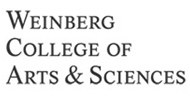Team:Northwestern/Project/Description
From 2011.igem.org
Helenmelon (Talk | contribs) (Created page with "__NOTOC__ {{:Team:Northwestern/Templates/trial}} <html> <div id="header" style="margin: 14px 0px 0px -0px;"> <img src="https://static.igem.org/mediawiki/2011/a/ad/Heading_banner_long1...") |
Helenmelon (Talk | contribs) |
||
| (12 intermediate revisions not shown) | |||
| Line 10: | Line 10: | ||
</html> | </html> | ||
| + | <br><br> | ||
| + | <DIV style="font-size:20px">Biosensing System Design</DIV> | ||
| - | |||
| - | |||
| - | |||
| - | |||
| - | |||
| - | + | There are three vital components to our system: the autoinducer, the receptor protein, and the reporter construct. The autoinducer will be supplied by ''P. aeruginosa''. The receptor proteins need to be produced by the ''E. coli''. Finally, the reporter sequence has to be regulated by the inducible promoters (autoinducer/R-protein specific). The three components are depicted below in Figure 1. | |
| - | There are three vital components to our | + | |
| - | + | ||
| - | + | ||
<div align="center"><html><table class="image"> | <div align="center"><html><table class="image"> | ||
| - | <caption align="bottom"></html>'''Figure 1:''' The | + | <caption align="bottom"></html>'''Figure 1:''' The three components of the sensing system in ''E. coli'': (a) the autoinducer, (b) the receptor R-protein, and (c) the reporter construct.<html></caption> |
<tr><td><img src="https://static.igem.org/mediawiki/2011/1/13/General_idea.jpg" style="opacity:1;filter:alpha(opacity=100);" width="700px" height="140px" alt="fig1"/ border="0"></td></tr> | <tr><td><img src="https://static.igem.org/mediawiki/2011/1/13/General_idea.jpg" style="opacity:1;filter:alpha(opacity=100);" width="700px" height="140px" alt="fig1"/ border="0"></td></tr> | ||
</table></html></div> | </table></html></div> | ||
| - | |||
| - | |||
| - | |||
| - | |||
| - | |||
| - | + | When combined, the three components of the system facilitate the detection of ''P. aeruginosa'', as depicted in Figure 2. The autoinducer concentration directly influences the level of reporter expression. However, since autoinducers are generally produced at low basal levels by ''P. aeruginosa'', this may complicate the detection of these molecules by our biosensors. Therefore, to enhance the sensitivity of our biosensors to the autoinducers, we chose to express the R-proteins from strong, constitutive promoters. To combine R-protein synthesis and the reporter into a single construct, the inducible promoter and reporter sequences are upstream of the constitutive promoter and R-protein gene to minimize the effects of transcriptional readthrough. | |
| - | <caption align="bottom"></html>'''Figure 2:''' The ''P. aeruginosa'' detecting | + | |
| + | |||
| + | <div align="center"><html><table class="image"> | ||
| + | <caption align="bottom"></html>'''Figure 2:''' The ''P. aeruginosa'' detecting biosensor system design.<html></caption> | ||
<tr><td><img src="https://static.igem.org/mediawiki/2011/3/37/Construct_design.jpg" style="opacity:1;filter:alpha(opacity=100);" width="600px" height="400px" alt="fig1"/ border="0"></td></tr> | <tr><td><img src="https://static.igem.org/mediawiki/2011/3/37/Construct_design.jpg" style="opacity:1;filter:alpha(opacity=100);" width="600px" height="400px" alt="fig1"/ border="0"></td></tr> | ||
</table></html></div> | </table></html></div> | ||
| + | <br> | ||
| + | |||
| + | |||
| + | |||
| + | {{:Team:Northwestern/Templates/footer}} | ||
Latest revision as of 02:35, 29 October 2011
PROJECT

RESULTS

CONSIDERATIONS

ABOUT US

NOTEBOOK

ATTRIBUTIONS


There are three vital components to our system: the autoinducer, the receptor protein, and the reporter construct. The autoinducer will be supplied by P. aeruginosa. The receptor proteins need to be produced by the E. coli. Finally, the reporter sequence has to be regulated by the inducible promoters (autoinducer/R-protein specific). The three components are depicted below in Figure 1.
 |
When combined, the three components of the system facilitate the detection of P. aeruginosa, as depicted in Figure 2. The autoinducer concentration directly influences the level of reporter expression. However, since autoinducers are generally produced at low basal levels by P. aeruginosa, this may complicate the detection of these molecules by our biosensors. Therefore, to enhance the sensitivity of our biosensors to the autoinducers, we chose to express the R-proteins from strong, constitutive promoters. To combine R-protein synthesis and the reporter into a single construct, the inducible promoter and reporter sequences are upstream of the constitutive promoter and R-protein gene to minimize the effects of transcriptional readthrough.
 |
 "
"




